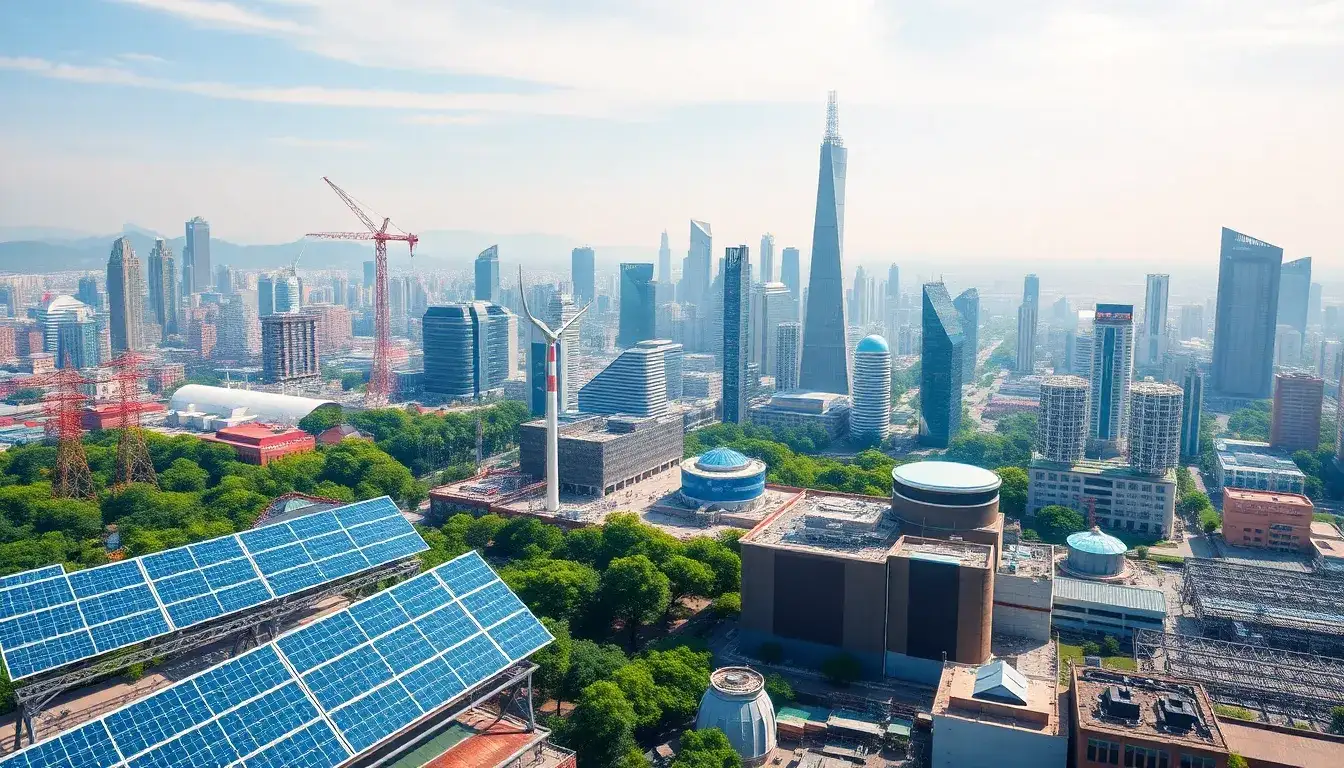
Annual Highlights | China’s Power Development and Reform Report (2025)
2024 is a crucial year for achieving the goals and tasks outlined in the 14th Five-Year Plan. The power industry is accelerating the establishment of a new energy system and a new power grid. The total installed power generation capacity in the country has increased by 14.6% year-on-year, with newly added capacity reaching a new high. Renewable energy continues to be the backbone, adding over 300 million kilowatts for two consecutive years. The share of renewable energy generation exceeds one-third of the total power output, and the increase in non-fossil fuel generation accounts for over 80% of the overall growth in power generation.
Power investment has been consistently higher than grid investment for five consecutive years. The construction of a nationally unified electricity market is advancing rapidly, with the proportion of market-based trading increasing by 1.3 percentage points compared to the previous year. The volume of inter-provincial and inter-regional market transactions has increased more than tenfold compared to nine years ago. This report analyzes the supply and demand situation, operational characteristics, reform progress, and development direction of China’s power system over the past decade.
In 2024, China’s economy is expected to operate smoothly amid a more complex international and domestic environment, achieving major goals in economic and social development. The statistical bulletin for national economic and social development in 2024 indicates that the preliminary calculation of GDP for the year is 1349084 billion yuan, representing a 5.0% increase at constant prices, with per capita GDP reaching 95749 yuan, up 5.1% from the previous year. Power supply across the nation has remained generally stable despite facing severe cold and multiple rounds of high temperatures and typhoons in the summer.
By the end of 2024, the total installed power generation capacity reached 3.35 billion kilowatts, marking a 14.6% year-on-year increase. The newly added capacity reached 430 million kilowatts, a new record. Renewable energy continues to dominate, with newly added capacity surpassing 300 million kilowatts for two consecutive years, accounting for over 50% of global new installations.
The total electricity generation for 2024 is projected to be 10.1 trillion kilowatt-hours, an increase of 6.7% year-on-year. The clean energy generation, including hydropower, nuclear, wind, and solar power, totals 3712.6 billion kilowatt-hours, reflecting a 16.4% growth from the previous year. The renewable energy generation increased by 19%, accounting for more than one-third of all power generation.
The average annual power consumption has shown steady growth for five consecutive years, exceeding GDP growth by 1.8 percentage points. In 2024, total electricity consumption reached 9852.1 billion kilowatt-hours, a 6.8% increase year-on-year. The average annual growth rate since the 14th Five-Year Plan began is 6.7%.
Electricity consumption from various sectors has increased consistently, with electricity accounting for approximately 28% of total energy consumption. The electrification of end-use energy has progressed, driven by economic development and carbon neutrality goals.
In 2024, the first quarter saw a rapid growth of electricity consumption at 9.8%, followed by growth rates of 6.5%, 7.6%, and 3.6% in the second, third, and fourth quarters, respectively. The average temperature reached a historical high, impacting consumption patterns and leading to fluctuations in electricity demand.
The power consumption structure continues to optimize, with the secondary industry’s share decreasing by 1 percentage point. The first industry’s electricity consumption has increased significantly, driven by advances in agricultural electrification. The growth rates of electricity consumption across sectors in 2024 are as follows: the first industry at 6.3%, the second industry at 5.1%, and the third industry at 9.9%.
By the end of 2024, the total installed power generation capacity reached approximately 3.35 billion kilowatts, an increase of 14.6% year-on-year, marking the highest growth in the last decade. The capacity of renewable energy has surpassed that of thermal power for the first time, with non-fossil fuel generation capacity accounting for 58.2% of total capacity.
In 2024, the newly added power generation capacity reached 433 million kilowatts, a new historical high, with renewable energy accounting for 86% of the total new capacity. Projects aimed at developing renewable energy bases in desert and arid areas are progressing, with several major projects coming online.
Overall, the power supply and demand situation remains balanced, with a high utilization rate of renewable energy sources. The national carbon market is also operating smoothly, with a significant increase in both trading volume and carbon prices. By the end of 2024, the cumulative trading volume of carbon emission allowances reached 6.3 billion tons.







